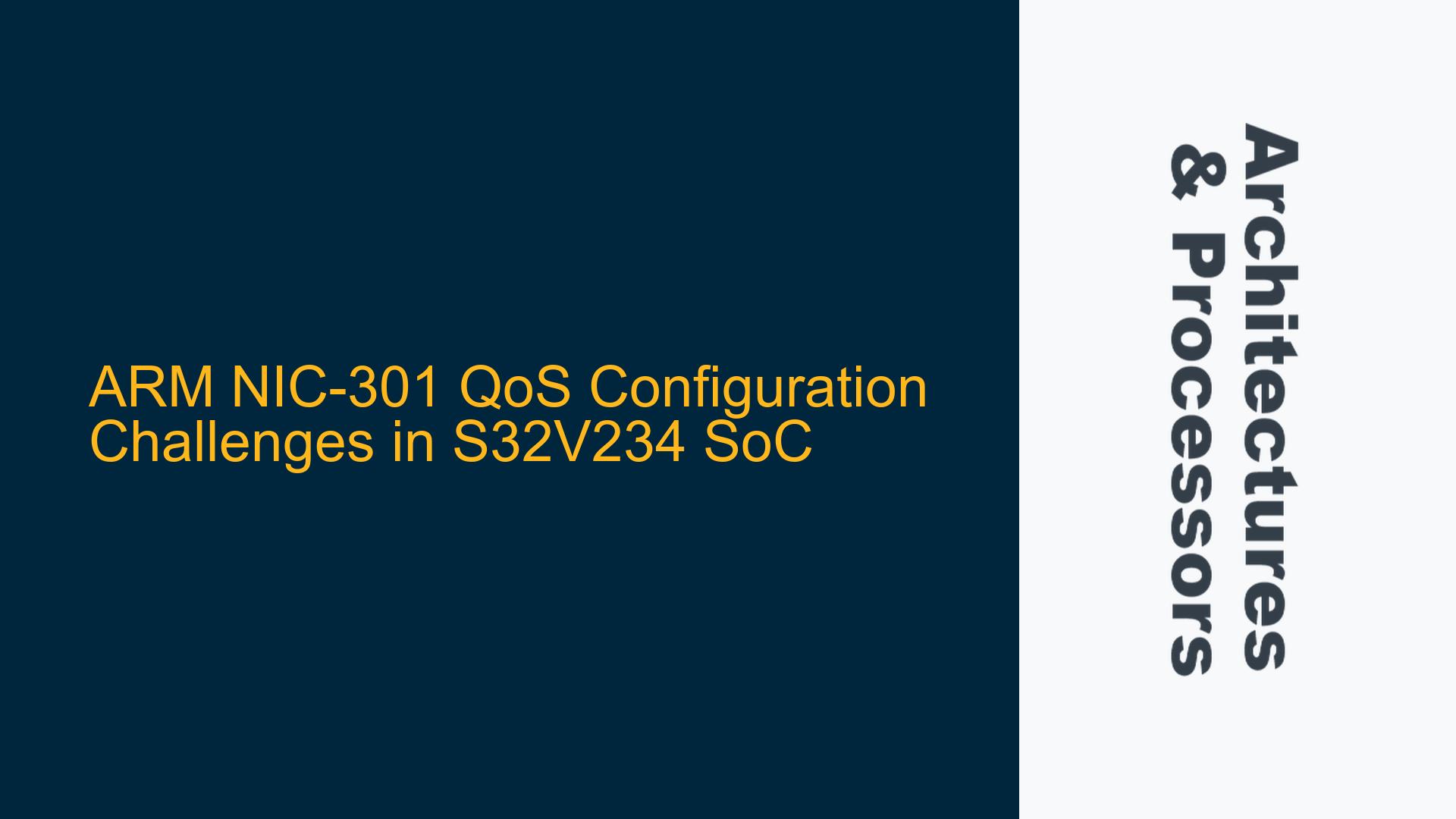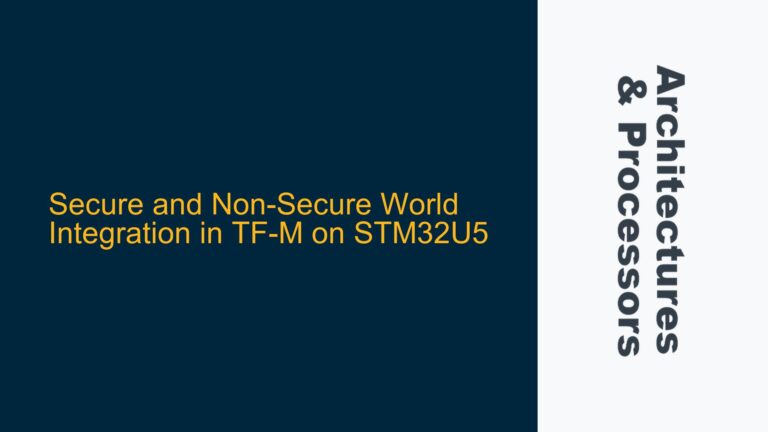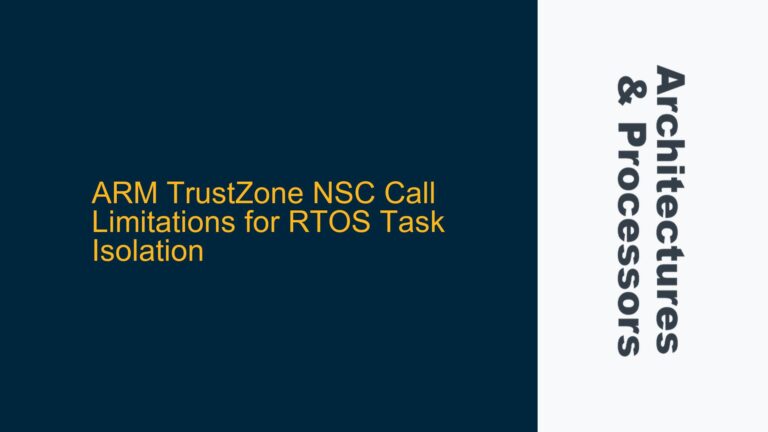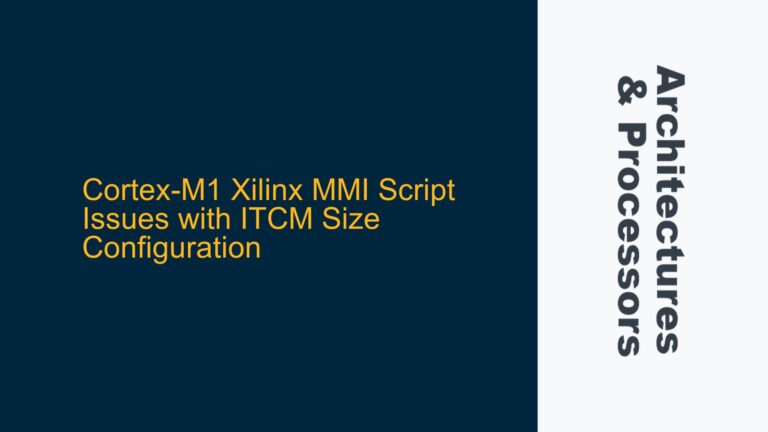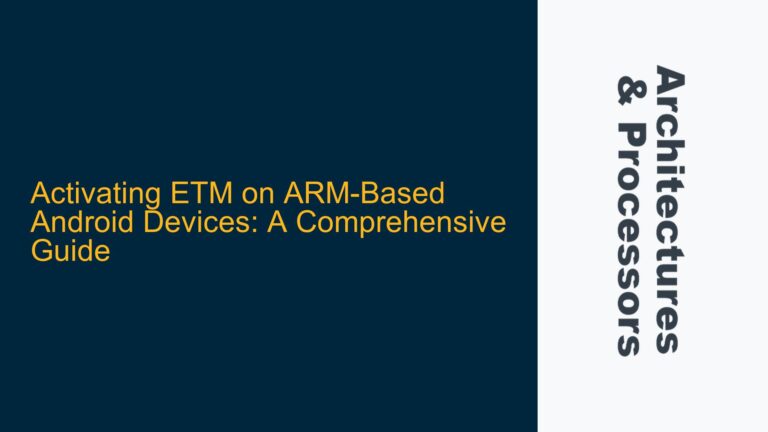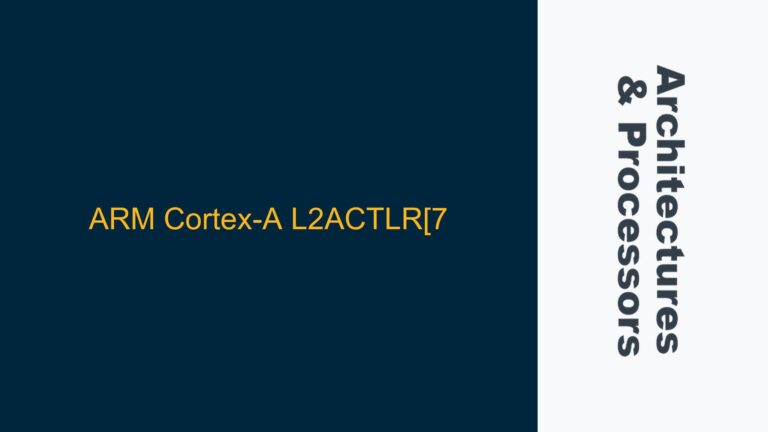Base Address Identification and Memory Mapping Ambiguity in NIC-301
The ARM NIC-301 Quality of Service (QoS) module is a critical component in the S32V234 SoC, responsible for managing data traffic between various subsystems, ensuring optimal performance and resource allocation. However, one of the primary challenges faced by developers is identifying the base address of the NIC-301 module. The Technical Reference Manual (TRM) for the NIC-301 provides a detailed description of the memory-mapped registers, such as the qos_cntl registers, which are offset from the base address. However, the Global Programmer’s View (GPV) and the memory map provided in the TRM are not sufficiently clear, leading to confusion.
The base address of the NIC-301 module is typically defined by the SoC vendor, in this case, NXP for the S32V234. The base address is usually specified in the SoC’s memory map documentation, which is separate from the NIC-301 TRM. The memory map documentation provides a comprehensive view of the address space, including the regions allocated to various peripherals, including the NIC-301. If the base address is not explicitly mentioned in the NIC-301 TRM, it is essential to refer to the S32V234 SoC reference manual or the board support package (BSP) documentation.
In some cases, the base address may be configurable, depending on the SoC’s memory map configuration. This is particularly true for SoCs that support dynamic memory remapping or have multiple memory regions that can be assigned to different peripherals. In such cases, the base address of the NIC-301 module may be determined by the bootloader or the firmware during the initialization phase. It is crucial to ensure that the base address is correctly configured before attempting to access the NIC-301 registers.
Exception Level Requirements for NIC-301 Register Programming
The ARM architecture defines several Exception Levels (ELs), each with different privileges and access rights. The NIC-301 module, being a critical system component, may require specific privilege levels for accessing and programming its registers. The question of whether NIC-301 registers can be programmed at EL0 (user mode) or if a higher exception level is required is a common concern.
In most ARM-based systems, access to critical system registers, such as those in the NIC-301 module, is restricted to higher exception levels (EL1, EL2, or EL3). This restriction is in place to prevent unauthorized or accidental modifications that could compromise system stability or security. The NIC-301 TRM does not explicitly state the required exception level for programming its registers, but it is generally recommended to operate at EL1 or higher when configuring system-level components.
The ARMv8-A architecture introduces the concept of Secure and Non-secure states, which further complicates the access requirements. The NIC-301 module may be configured to operate in a secure state, meaning that only secure software (running at EL3 or in a secure EL1) can access its registers. If the NIC-301 is in a secure state, attempting to access its registers from a non-secure EL1 or EL0 will result in an exception or access violation.
To determine the exact exception level and security state required for programming the NIC-301 registers, it is essential to consult the S32V234 SoC documentation, particularly the sections related to system security and privilege levels. Additionally, the NIC-301 TRM may provide hints or recommendations regarding the required privilege levels for accessing specific registers.
Runtime Configuration vs. Boot-Time Configuration of NIC-301 Registers
The configuration of the NIC-301 module can be performed either at boot time or during runtime. The choice between these two approaches depends on the specific requirements of the system and the flexibility needed in managing QoS settings.
Boot-time configuration involves setting up the NIC-301 registers during the initialization phase, typically within the bootloader or the firmware. This approach ensures that the QoS settings are applied as soon as the system starts, providing consistent behavior from the beginning of operation. However, boot-time configuration may limit the flexibility to adjust QoS settings dynamically in response to changing system conditions.
Runtime configuration, on the other hand, allows for dynamic adjustment of the NIC-301 registers during system operation. This can be achieved through a kernel module or a user-space application that interacts with the NIC-301 registers. Runtime configuration provides greater flexibility, enabling the system to adapt to varying workloads and traffic patterns. However, it also introduces additional complexity, as the system must ensure that changes to the NIC-301 registers do not disrupt ongoing operations or cause instability.
The NIC-301 TRM does not explicitly state whether runtime configuration is supported, but it is generally possible to modify the registers at runtime, provided that the system is designed to handle such changes safely. It is important to consider the potential impact of runtime configuration on system performance and stability, particularly in real-time or safety-critical applications.
Outstanding Transaction Limits and Cluster-Level QoS Management
The NIC-301 module provides mechanisms for managing outstanding transactions, which are critical for optimizing system performance and preventing resource contention. The question of whether the outstanding transaction limit can be set per core or if the interconnect views the entire cluster as a single unit is an important consideration for system designers.
In most ARM-based systems, the NIC-301 interconnect views the entire cluster as a single unit when managing outstanding transactions. This means that the outstanding transaction limit is applied at the cluster level, rather than on a per-core basis. The interconnect manages the flow of transactions between the cluster and other system components, ensuring that the total number of outstanding transactions does not exceed the configured limit.
This cluster-level approach simplifies the management of outstanding transactions but may limit the ability to fine-tune performance for individual cores. In systems where different cores have varying workloads or performance requirements, this could lead to suboptimal resource allocation. However, the NIC-301 module may provide additional mechanisms, such as priority levels or bandwidth allocation, to address these concerns.
To determine the exact behavior of the NIC-301 module in the S32V234 SoC, it is essential to refer to the NIC-301 TRM and the S32V234 SoC documentation. These documents should provide detailed information on how outstanding transaction limits are managed and whether any per-core configuration options are available.
Example Code Snippets for NIC-301 Register Configuration
While the NIC-301 TRM provides detailed descriptions of the registers and their functions, it does not include example code snippets for configuring the registers programmatically. This lack of example code can be a significant hurdle for developers, particularly those who do not have access to tools like AMBA Designer.
To address this gap, developers can refer to the S32V234 SoC BSP or the Linux kernel source code, which may include driver code for the NIC-301 module. The BSP typically provides example code for configuring various peripherals, including the NIC-301. Additionally, the Linux kernel may include a driver for the NIC-301 module, which can serve as a reference for register configuration.
If no example code is available, developers can create their own code snippets based on the register descriptions in the NIC-301 TRM. The following is an example of how to configure the qos_cntl register in C:
#include <stdint.h>
#define NIC301_BASE_ADDRESS 0x40000000 // Example base address
#define QOS_CNTL_OFFSET 0x00001000 // Example offset for qos_cntl register
void configure_qos_cntl(uint32_t value) {
volatile uint32_t* qos_cntl_reg = (uint32_t*)(NIC301_BASE_ADDRESS + QOS_CNTL_OFFSET);
*qos_cntl_reg = value;
}
int main() {
// Example configuration value for qos_cntl register
uint32_t qos_config_value = 0x0000000F; // Example value
configure_qos_cntl(qos_config_value);
return 0;
}
In this example, the configure_qos_cntl function writes a value to the qos_cntl register at the specified base address and offset. The actual base address and offset should be obtained from the S32V234 SoC documentation.
Conclusion
Configuring the ARM NIC-301 QoS module in the S32V234 SoC involves several challenges, including identifying the base address, determining the required exception level, choosing between runtime and boot-time configuration, managing outstanding transaction limits, and creating example code snippets for register configuration. By carefully analyzing the NIC-301 TRM and the S32V234 SoC documentation, developers can overcome these challenges and effectively configure the NIC-301 module to optimize system performance and resource allocation.
